A kea crossing only operates when a school patrol and two fluorescent orange crossing point flag signs (one on each side of the road) are present.
The school patrol may be operating before and after school and possibly at lunch time. When the school patrol displays their STOP signs, traffic must stop. This helps keep children safe when they're going to and from school.
When there's no school patrol and no crossing signs, the crossing point is just like any other section of road.
In general, pedestrian crossings are safe places to cross the road. However, there's a potential danger with pedestrian crossings that aren't used very often. Motorists who regularly drive through these crossings know pedestrians seldom use them. When a pedestrian expects they can safely step out onto such a pedestrian crossing, and a motorist assumes no one will be using the crossing, a crash is more likely to happen.
Crossings where patrols are operating are generally safer than pedestrian crossings where no one is controlling pedestrians or traffic.
Pedestrians and traffic are always under the control of a school patrol while the kea crossing is operating. Motorists are less likely to assume no one will be crossing the road, and pedestrians are less likely to cross the road while it is unsafe to do so.
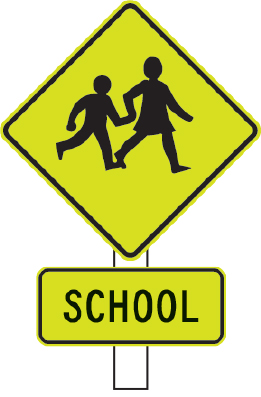
Fluorescent yellow-green ‘children’ and ‘school’ warning sign
There are yellow or fluorescent yellow-green ‘children’ and ‘school’ combination warning signs 65 metres before the crossing on each approach. These warning signs are permanent, whether the crossing is being used or not. They’re the same as those used outside schools to warn there may be pedestrians crossing ahead.
When the kea crossing is operating, two types of removable signs are used. These signs include two fluorescent orange 'Children' flag signs and the swing-out orange school patrol STOP signs.

'Look out for children' fluorescent orange flag sign

School patrol STOP sign
When the school patrol finishes operating, the fluorescent orange crossing point flag signs and orange school patrol STOP signs are removed. The crossing site then becomes an ordinary section of road.
Kea crossings have a 'limit' line marked across each approach, to guide drivers stopping at the crossing.
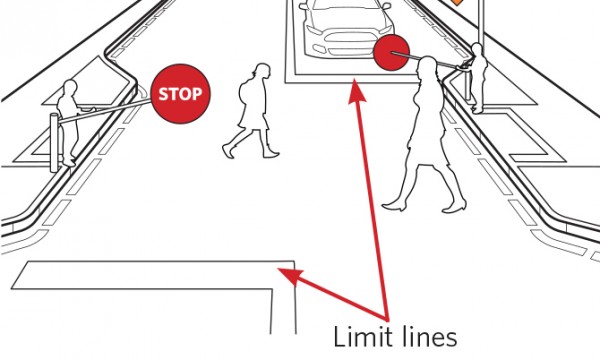
Pedestrian 'hold lines' appear 75 centimetres behind the kerb at both ends of the crossing. The lines show pedestrians where they should stop and wait for the school patrol to guide them across the road.
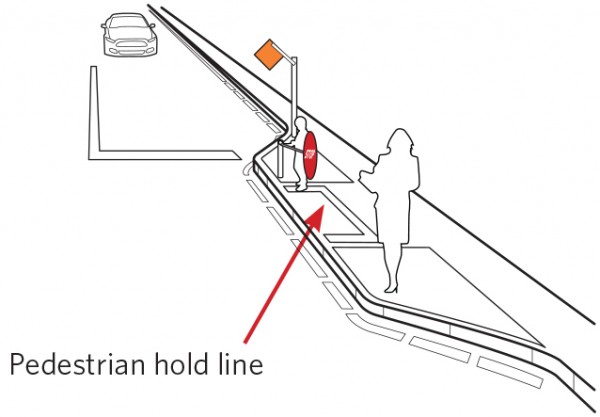
The road at a kea crossing site is no more than 10 metres wide. Even when a patrol isn't operating, pedestrians may find the site a relatively safe and narrow place to cross the road. They must be careful – checking for approaching vehicles and waiting for a suitable break in traffic before crossing.
A fluorescent orange crossing flag sign will be placed at both ends of the crossing point (ie one on each side of the road). Once both these signs are in place the site is established as a kea crossing and a school patrol may operate at the crossing.
The site stops being a kea crossing when the school patrol goes off duty and the flag signs are removed. If one of the flag signs is removed, you should still be careful, because the adult supervisor may have to cross the road to remove the remaining flag sign.
The school supervises the kea crossing site. A school official arranges the patrol's schedule and ensures an adult supervisor is present.
School patrols are trained by Police to use the kea crossings safely. Children are told to obey the school patrol's instructions, but always be aware that children can behave erratically when they're waiting to cross the road.
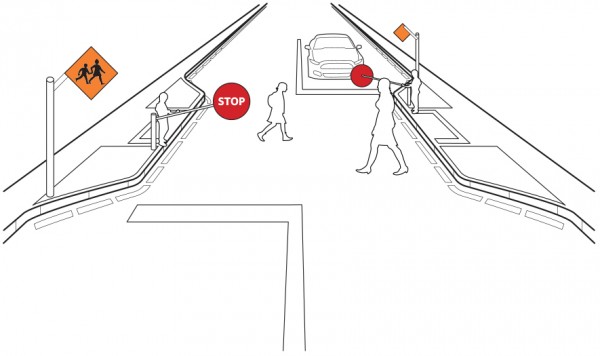
Stop if you see these signs. They warn you children are using the kea crossing. Under no circumstances must you pass another vehicle that has slowed or stopped at the crossing.
If you don't stop when required at a kea crossing, you risk hitting a child and you could be fined or charged with dangerous driving.
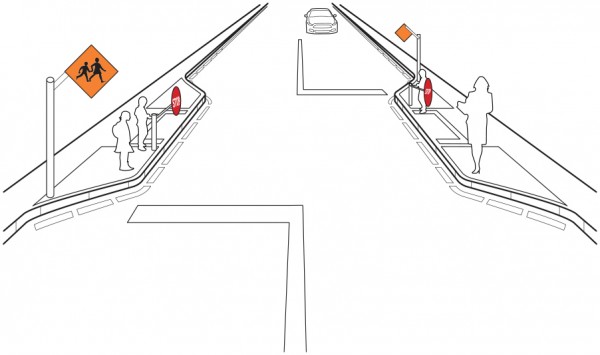
If you can only see the orange crossing signs, approach carefully and be prepared to stop. The signs tell you school patrols are operating and children are probably waiting to use the kea crossing.
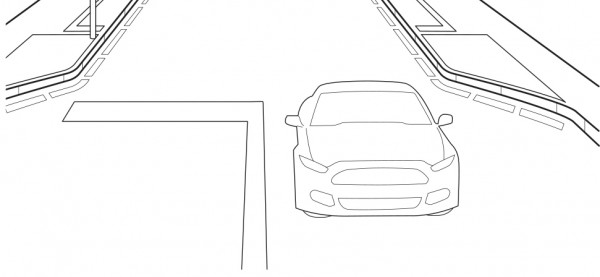
When there are no signs and no school patrol, drive as you normally would on any other road, but remember that pedestrians might cross the road here.
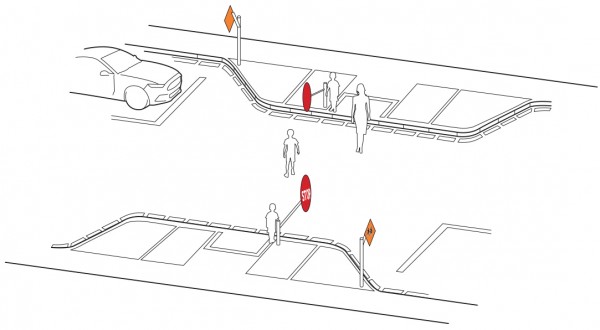
Here is an overhead view of what the kea crossing points look like. Notice the limit line, to let motorists know where to stop.